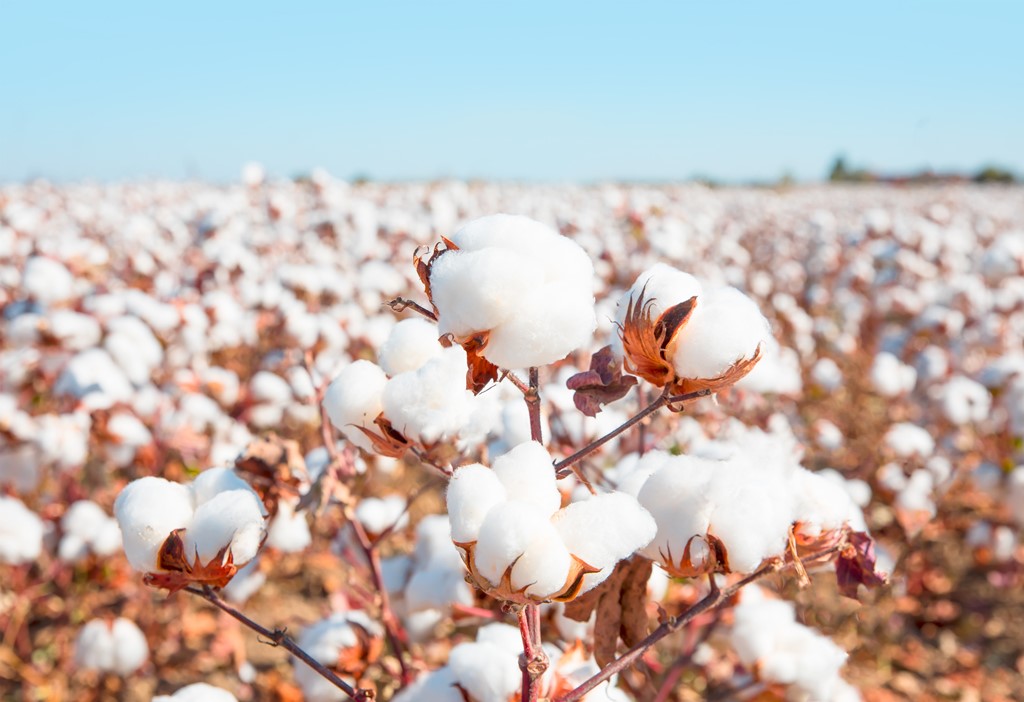Modern cotton in the Northern Territory

The Territory is renowned for producing quality mangoes and other tropical fruit, vegetables, grapes, ornamental plants, pastures and fodder crops, but interest in broadacre crops is growing as farmers and pastoralists look to diversify their businesses.
With the Territory’s favourable tropical weather conditions and the implementation of modern technologies, this includes an increasing interest in growing cotton.
Broadacre crops include rice and peanuts, and fibre crops like cotton. Information about the Department of Industry, Tourism and Trade’s work to support agricultural developments, including plant industries development in the Northern Territory, is available online.
Further growth of broadacre cropping, and in particular the cotton industry, could bring significant growth opportunities for supply chains, associated transport and logistics within the Territory, while building capacity and strengthening the northern agricultural sector.
During the 2020-21 season approximately 3,200 ha of cotton was grown in the NT. This was up from 1,000 ha in 2019-20. Over 90% of the cotton was grown with natural rainfall only and the remainder supplemented by irrigation at the end of the wet season. Rain fed cotton has produced very good results in terms of fibre quality, strength, colour and yield.
There is also the potential to develop a common user cotton gin in the Katherine region. Currently cotton is transported to Queensland for processing at significant cost to the grower in terms of freight.
A cotton gin is a machine that separates cotton seeds and other foreign material like trash from cotton fibres. The cottonseed by-product produced from the ginning process can then be used for both humans (as a cooking oil) and livestock (as a high-protein feed source).
The establishment of a cotton gin in the Katherine region would reduce freight costs for the farmers in terms of whole cotton to the gin and cotton seed back to the grower for internal use or on-selling. A NT cotton gin would be a significant enabler for the cotton industry to make a major contribution to the Territory’s export economy.
To support this goal, the Department of Industry, Tourism and Trade is invested in research, development and extension to diversify and expand the Territory’s plant industries, including controlling any risks. The department responded to concerns that Genetically Modified (GM) cotton, when accidentally dropped on roadsides from trucks transporting it to the gin, can spread and become a hard-to control-weed as it is resistant to a certain herbicide, glyphosate.
An independent study was undertaken to scientifically assess whether GM and conventional varieties of cotton had the potential to become a weed problem along roadsides in the Northern Territory (and northern Australia more broadly). In the field experiment, GM and conventional cotton seeds were planted in 12 sites in northern Australia to test the premise that there would be no increase in the ability of GM cotton versus conventional cotton to establish weedy, or invasive populations.
As part of the research, GM and conventional cotton was hand planted in bush (open, fenced woodland), cattle country (grazed, irrigated fodder paddocks), roadway shoulders (graded, sand and fenced roads) and waterways (fenced irrigation channels) in the Kununurra (northern WA), Katherine (NT) and Broome (WA) regions.
The results indicated that over a number of years, cotton plants, both GM and conventional cotton, decreased in population. It was observed that environmental influences, such as nutrition, water availability, plant competition, being eaten by insects, grazing and trampling by cattle and fire, all contributed to cotton plant mortality, irrespective of whether it was GM or conventional cotton.
There was no evidence that GM provides increased fitness that could lead to cotton becoming more weedy. These results show that GM cotton populations will not be more invasive than conventional cotton. More recent research has also found that conventional and GM cotton would not be able to establish invasive populations in northern Australia and that any cotton growing on roadsides will eventually die off. In the interim, mechanical (such as slashing) or chemical (roadside spraying) means can be used to control growth.
Ongoing cotton agronomy trials at the Katherine Research Station and research on commercial farms are continuing. The department’s research agronomists are working on collaborative projects aimed at improving the management of cotton across the NT. This includes researching optimum fertiliser and water use, through analysis of time of planting, fertiliser application, row spacing, insect management and weed control.
More information
More information about the Department of Industry, Tourism and Trade’s agricultural developments are available online.
